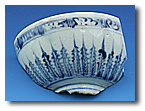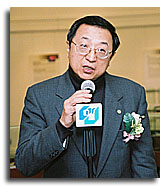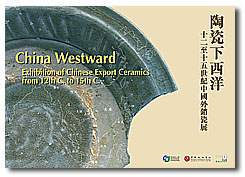Display retraces China's "ceramic route"
A collection of 200 ceramic relics, now on display at the CityU Gallery until 8 January, retraces the historical importance of porcelain as China Southeast Asia , mainland China Hong Kong . "We hope this collection helps piece together the historical picture of Chinese porcelain going westward," said CCIV Director Professor Cheng Pei-kai at the opening ceremony, December 13. The exhibition is on until 8th January at CityU Gallery.
Chinese porcelain rivals silk for its cultural contribution to world civilization. From the dynasties of Tang and Song onwards, porcelain accounted for the bulk of commodities among exports and became an important agent of Chinese civilization to Southeast Asia, India, Persian Gulf and as far away as the East Coast of Africa. Quanzhou and Canton South China were the major entrepots.
The exhibition stems from three main sources: the CCIV "China Westwards" project research team's collection from ruins of Angkor, Cambodia ; samples provided by archaeological institutes in Southeast Asia and mainland China Fujian China Southeast Asia , to 15 century.
Officiating the exhibition ceremony, both Dr Louis Ng, Executive Secretary of the Antiquities and Monument Office, and Professor Y S Wong, CityU's Vice President (Administration) reminded the audience not to overlook the importance of Hong Kong as a place of rich archeological resources. A significant proportion, about one fourth, of the ceramic relics showcased at the exhibition has been excavated in Hong Kong , mainly from Lantau Island
The




